Mokhotlong is a city and district at the same time, in the northeastern part of the country. It’s the first major city with an airport that you’ll find if you pass through the Sani Pass, an all-terrain vehicle-only mountain pass that challenges all road and 4WD enthusiasts and connects South Africa to the Kingdom from Lesotho. If you want to know more about this spectacular mountain pass, click here.
From the first moment you arrive in Lesotho through this mountain pass, you realize that you are at a beastly altitude, which we are not normally used to living in: it is colder than usual and when you look around, you see imposing mountains that they are shorter than you In fact, in this area we find the Thabana Ntlenyana, the highest point in all of southern Africa, which is precisely located in Mokhotlong.
Mokhotlong, which in Sesotho means “place of the bald ibis” is a quiet town, without many inhabitants (about 6,000), which originated around 1905 when the first police station of the region that controlled the goods passage of the Sani Pass. The city therefore became a good stopover and trading point, separated by long distances from other important cities in the country that found provisions and supplies by pony trek to Natal, South Africa through the mountain pass . Until 1947, radio contact was not established with Maseru, the capital.
Currently, Mokhotlong subsists thanks to agriculture and livestock which are the main economic engine of the area for the majority of the population. It is a fairly poor area where people have little income and the unemployment rate is the highest in the country along with a high rate of HIV. At the same time, there is a very low schooling rate because many children help their families to graze flocks, shear and sell the wool or do jobs for the subsistence of all of them. If you want to know more about shepherds and herds in Lesotho, you can click here.
These facts contrast with two major tourist events that currently take place there: the High Altitude Summer Marathon and the Roof of Africa Rally. These two events that take place between the Maloti Mountains, are starting to make this area a little more visited by their South African neighbors and tourists from all over the world who find the area a quiet region to relax in, go hiking, horseback riding, rafting, fly fishing, bird watching…
If you want to discover this area, watered by the Sengu River, also called the Orange River and which supplies water to many parts of it, we encourage you to continue reading, as for us it was a great discovery in terms of people, landscape and experience of life.
How to get there?
To get to Mokhotlong from the Sani Pass, you will need to go through the procedures at the border post that is located well above it and then follow the A1 road that goes directly to the city. It is about 53km on a good paved road, but with large slopes and unevenness. Watch out if you drive very early in the morning or when the sun is no longer there, because it is an area at a high altitude that tends to freeze or snow when it is the season.
If you are coming from the west of the country, the best road to get to Mokhotlong is the A1 which follows the north of the country, which goes from Maseru to Butha-buthe, passes through Letseng-la-Terae and finally reaches the town of Mokhotlong. It is a wide and well paved road. They also pass through high altitude points, you will also need to monitor the condition of the roads due to ice or snow in winter.
On the other hand, the road that connects Thaba-Tseka with Mokhotlong, passing through Menoaneng Pass, we do not recommend it unless you are experienced with 4×4 and you like challenges. This road (best downhill, from Mokhotlong to Thaba-Tseka) is an unpaved, rocky and steep road. You have to keep an eye out and ask beforehand how it is and if it has rained a lot in the days before, to see the condition of the road. In this link you will find different comments about the area of the iOverlander app.
When to visit?
The warm season or summer of Mokhotlong runs from October to March. The hottest month is January. Temperatures between 10-18ºC can be reached. The winter or cold season in the area runs from March to October, with July being the coldest month of the year. Temperatures usually range from -3 to 10ºC (but keep in mind that the higher the altitude, the colder it will be).
The problem, however, is that the rainy seasons coincide with the warm season, so we will find more rain when the temperature is better. The month that rains the most is also January and the months that rain the least are June-July.
For us, the most advisable months would be April and May, as it is relatively dry and not too cold, or from September to October, as the summer rains have not yet started.
However, you know that time is relative and changing these days. We did the Sani Pass in April, theoretically one of the best months to do it and yet, the week before going up, it had been raining heavily all day all week.
What to do in the Mokhotlong region?
The star activity that we would not miss in this region would be Pony Trekking. And if you also ask us with whom, we are clear: with the Ntlhoki family. This Basotho family that lives in the Malumong area, has been dedicated for a long time to trekking in the area on foot or on horseback, always trying to ensure that the money collected goes directly to the local population and favors remote areas of Mokhotlong. These Basotho pony treks are carried out to pass through areas where cars cannot reach and where there are almost no marked paths, in the middle of a spectacular landscape, the Maloti Mountains. The treks can be 2/3 days up to a week. We stayed with them for two days, sleeping in local houses of local families, riding Basotho horses, crossing rivers and valleys and marveling at this part of the country. His three brothers: Joseph, Peter and Alexander can make you live one of the best experiences in the country. Are you ready to read our experience with them?
Two days on horseback touring the Highlands and the Mokhotlong region
We were not at all used to riding horses, but when we searched for information about Lesotho, we saw that this was one of the must-do activities if you wanted to discover the means of transportation used by many shepherds and local people.
When we were waiting for days with sunnier skies at the Sani Lodge Backpackers in South Africa and just before crossing the Sani Pass, we came across various signs explaining hiking and horse riding routes in Lesotho. There, we found the name of a local family, and on the Internet, looking for this family, we saw that some travelers on Tripadvisor recommended a horseback trip with Jacob. The problem was that the reviews were from 2005, and it had been over 15 years… As we continued to search, we saw many coming out of a small hotel in Malumong, so we mentioned it to one of the girls working at the reception and she gave us the phone number of one of the sisters…
We contacted her, who gave us the phone number of one of the brothers and finally, we spoke to Joseph and Peter who were waiting for us at their house in order to go on an excursion with horses. They hadn’t received tourists for a long time, but we don’t know if it was because we liked them or because they wanted to make this trip, we decided that we would meet in front of a school after two days in order to go to their house , leave the car there, and do a two-day route by horse through the Highlands of that area, sleeping in a small rural village.
We were very excited! It was the first time we would do such a long route on horseback, and having to prepare luggage to carry on your back for two days on horseback made our eyes shine, like those children who go with their friends in the their first colonies.
After making the Sani Pass and sleeping at Me Nkume’s house in the cold, we took the car to the meeting point. There, there was Peter who was waiting for us and with whom we went to his house, which was located on a steep slope. We left the car there and he introduced us to his family: his mother, his wife, his sister, Joseph his brother who would also come with us, his father… He also showed us his house: a traditional basotho circular hut where they do all the actions of the day: cook, eat and sleep. It is very common in many rural places in Africa to find a house with a single room that serves as a dining room, kitchen, wardrobe and bedroom… Here they take advantage of all the spaces!
Once outside, those who would be our traveling companions arrived: Laia would travel with a male called Rasta, and Esteve with a female called Maluti. Peter and Joseph taught us the first lessons on riding a horse: how to mount, how to lead, the cry to make it run faster… A very quick theoretical session of less than 5 minutes where we hard to learn all the concepts. The best learning, however, was practice; so they made us get on top of the horses and with our rucksacks on our backs we started to travel by horse through the village of Malumong.
During the first part of the journey, we were also accompanied by Joseph, who kept taking pictures of us and laughing at the way we carried the horses. Peter stood next to us and taught us how to do it to go faster, but Esteve’s Maluti didn’t feel like it. Maybe she was lazy, or maybe her rider wasn’t doing well enough or was too heavy… Instead, Laia’s Rasta was a competitive horse. He always wanted to be first, and if Peter was ahead, he was behind him.
When we left the village of Malumong, we started to climb some mountains and narrow paths. From time to time, Esteve would shout “Aiii” which was the cry we had been taught to encourage the animal to go faster, but Maluti paid him little attention. The landscape was increasingly uninhabited, between mountains and valleys and of incredible beauty.
We arrived at the top of a hill from where Joseph and Peter showed us the Orange River. This river that originates in the Drakensberg area, between Lesotho and South Africa, is one of the most important in southern Africa. From the top of the mountains we could observe its meanders. There, Joseph said goodbye to us and galloped back with his horse as if we were in a Western movie. In Lesotho, for the locals riding a horse is like riding a bicycle for many Europeans. They learn from a very young age and are used to riding without a mount or a saddle to sit on, and at breakneck speed.
Peter told us that it was time to go down to the river, and there we would have lunch before following the route to Malubalube, a small town located in the middle of the mountains and where we would spend the night. When we got off, Peter was telling us that they wanted to build a dam in the whole area we were crossing. Lesotho is one of the main suppliers of water in South Africa that has a dam project with its neighboring country to ensure its water supply. For this reason, one of the visits that must be done if you visit Lesotho is the Katse dam (if you want to know more, click here).
Peter was not at all in agreement with the construction of that dam. Many of those small towns would have to leave in search of a better life, and there would be very few benefits for the local people. Really, the area where they wanted to build the dam was immense, and surely, if in a few years we want to do the same route on horseback, we wouldn’t be able to pass that way again.
After arriving at the Orange River and taking a break from galloping the horse (and the horses resting from us), we chatted with Peter about his family and tourism. They had a tourism company that did mountain tours, horseback riding and many other activities. The company was run by his brother Jacob who was murdered by a person from the town who was jealous of the success of this family. This was a very hard blow for that family as Jacob was the eldest brother and in Africa the eldest brother is much more than a brother. Now, Joseph and Peter were trying to continue running the tourism business, but with the closure of the hotel they had in their village and the arrival of Covid, they had not done any excursions for a long time. He looked like a very humble and simple person, like all the Basotho we met in the few days we spent in the country.
After the break, it was time to get back on the horses to go up the mountain towards the village of Malubalube. Now it was all uphill, and it seemed a lie the strength of the horse, which with all four legs climbed the small paths to gradually gain height. Maluti was the slowest, and despite Esteve’s attempts to encourage her, she took things more calmly than Rasta, who always wanted to be first.
After climbing back into the mountains, Peter pointed to the town where we would sleep on the horizon. It wasn’t long, and we started to gallop, taking advantage of the fact that the ground was less steep. The feeling of flying with the horse, even if only for a few seconds for fear of falling, was incredible. On the way, we met shepherds, people who went with their horses, and others who worked in agriculture. We were in a completely rural area of the country, which we never imagined we would end up in…
When we arrived at Malubalube, we got off the horse and brought them to the watering hole so they could rest after this long day. There, we met Mapasang, a very friendly woman who showed us our cabin. It was a circular mud house, with mats on the floor for sleeping, accompanied by typical Lesotho blankets that we liked so much.
When we arrived, other people from the village also came to see us there. Some girls came who were dressed in a traditional way, and with Peter we went for a walk around the village, visited the bar where we found people who brought some extra local beers, took some pictures together with the typical hat of Lesotho, the mokorotle, which is said to have its origin in the silhouette of a mountain near Thaba Bosiu (if you want to read more about our experience on this magical mountain, click here); and enjoy how the day faded in that corner of the mountains of the Highlands of Lesotho.
We dined on a dish that Mapasang cooked for us, and we went to bed early observing a starry sky above our heads. The horses rested in a small enclosure right in front of the house, and we would rest in a traditional house with blankets typical of the country. A totally Basotho experience!
The next day, when we woke up, Peter was already preparing Maluti and Rasta’s mounts. It was time to return to Malumong by another route, in this way we would make a circular tour during these two days on horseback through Lesotho. In the following image you can see roughly the route we took:
The next morning, there was more activity around the village. A shepherd grazed his sheep from his horse, others with agricultural tools went to work in the field, and others galloped leisurely with their horses. We followed a cart path that was wider than the day before, where we could gallop bravely (especially Rasta de la Laia, who only had to follow Peter!). When it seemed that we were not going to get off that road, Peter took us up a small path up the mountain. There, it is impossible to go with a GPS. You have to know how to orient yourself by the location of the mountains and by the sun because we were taking small paths that made us gain altitude again in the Highlands of Lesotho. In fact, at one point we got off and did it on foot because Peter thought it was dangerous to take the horses that way.
The landscape today was very similar to the previous day. Mountains and valleys before you, on a bright sunny day, and completely isolated from any population and any person. We were in a remote place enjoying the moment, the breeze, the horse’s breathing and what we had in front of us…an experience we will surely remember for a long time.
We stopped to eat halfway, and in the afternoon we climbed again towards Malumong; where we arrived at the time the children were returning from school. We got off the horses, and hugged Maluti and Rasta to thank them for having put up with those two guiris who had never ridden a horse for two days… And when we made the first pass on the ground, we saw that the following days we would suffer. Not from a backache, but from an assache after the stings that the gallop of those two days had left us.
It was getting dark and we decided to stay and sleep at the Ntlhoki family’s house. They warned us that it would be very cold, and they gave us a small blanket to sleep in the dining room they had in one of the houses. We took the opportunity to shower in the African style, that is, with a basin full of water and a small bucket that we used to pour water over ourselves, lather up and then rinse off.
After we were clean, we went to see the father, an old man, who was cutting firewood with a hoe, and we met one of the other brothers: Alexander, who was driving a herd that approached the house. The day was fading again next to this family that had welcomed us so well.
When it got dark, we went into the house where we built a fire inside and cooked. We sat on the floor, lit by a small light, and with different cats roaming around. It was an insurance to not have rats. We were chatting, playing the guitar and singing songs in a very nice family evening, where we felt a little Ntlhoki. African hospitality is one of the most beautiful experiences we have had during our trip to Africa.
The next morning, after resting and with some needles in my ass when walking, we said goodbye to the Ntlhoki family by taking a family group photo. It had been two very intense days in a rural area of the Highlands, with Rasta, Maluti, the Ntlhoki family, Mapasang and a brutal landscape that we had discovered thanks to this family. It is an experience that we recommend you do with them in this area, because it is much less touristy than Semonkong and Malealea, and where you can enjoy the African warmth first hand. If you want to contact them, you can WhatsApp them on +26650417398 (Joseph) or +26664015510 (Peter) or contact them on Facebook at Ntlhoki Pony Trekking here. To get to his family’s house in Malumong, you can follow the location we marked on the iOverlander in this link. For us, this has been one of the best experiences of our gap year in Africa.
Where to sleep in Mokhotlong region?
– Riverside nº 10: If you only enter the country of Lesotho via the Sani Pass, you want to enjoy a totally local experience, we recommend this place, located before reaching Mokhotlong. Me Nkune, the owner of the accommodation, will welcome you to her house where she has some small cabins where you can sleep (135R pp/night) and also a small garden where you can camp. We went with our car with a tent and camped in the garden next to the river. To camp there, we paid 60R per person (about €7 for two). It must be said that it is a completely local place, without luxuries and with a toilet and latrine. We loved it: we were able to walk around the village, talk to people and learn our first words in Sesotho and of course, meet for the first time the famous Basotho friendliness that would impress us throughout the country. You can find the location of this accommodation here.
– ShoeShoe B&B: This accommodation is one of the best in the area. If you need to take a break in the city of Mokhotlong with all the possible facilities in the area, this is your place. It has double rooms at around 550R with good internet. If you want to get in touch or find out more about the accommodation, click here.
– Ntlhoki family: If what you are looking for is a different, more local experience, in order to get to know the area, its people and its customs, this is your place. We advise you to visit this family, for us it was one of the best experiences in the country! They offer trekking with ponies throughout the area and also accommodation in their house if you want to spend a night there. Simple accommodation, without many amenities and with a latrine toilet. Here you can have a full Basotho experience with this beautiful family. To get to his family’s house in Malumong, you can follow the location we marked on the ioverlander here, or contact with them via Whatsapp to +26664015510 (Peter) or +26650417398 (Joseph).




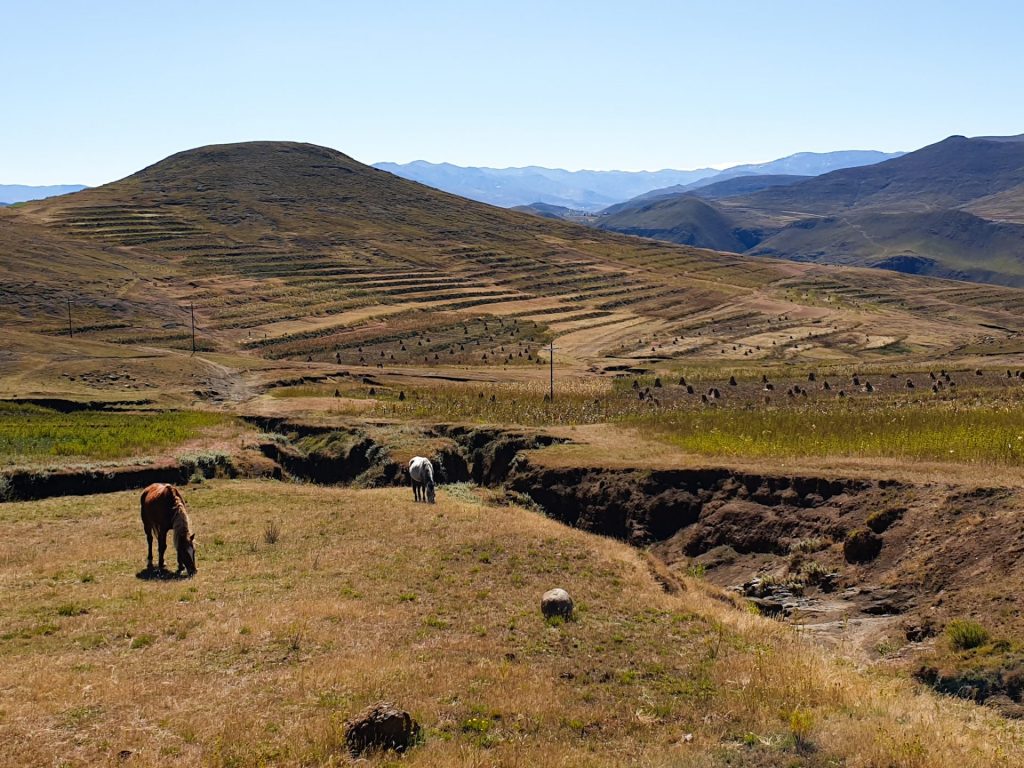

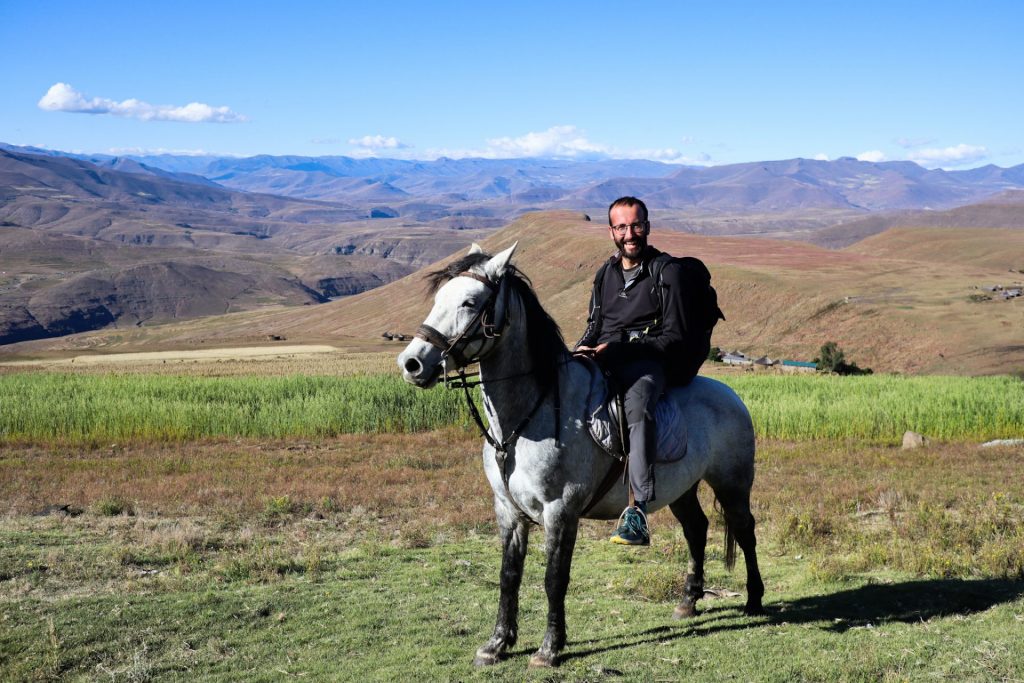


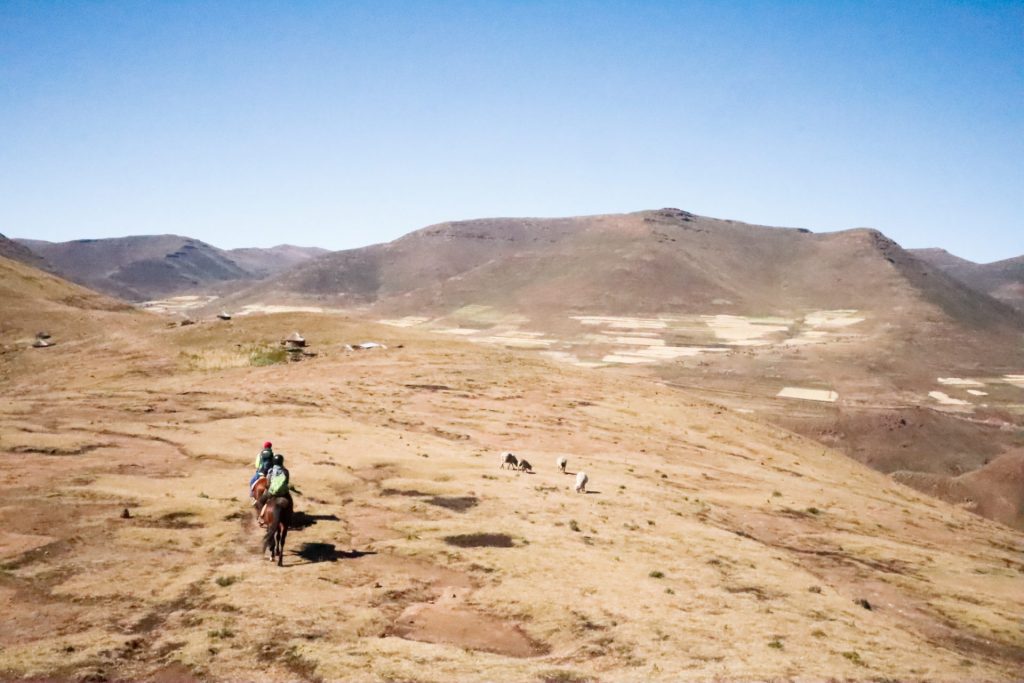
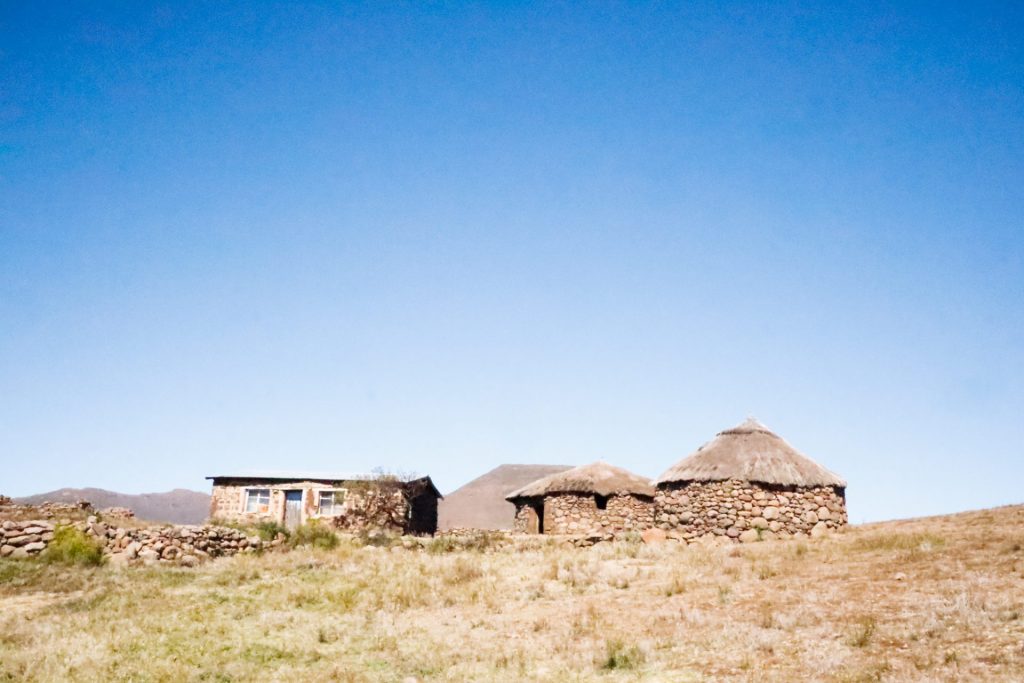

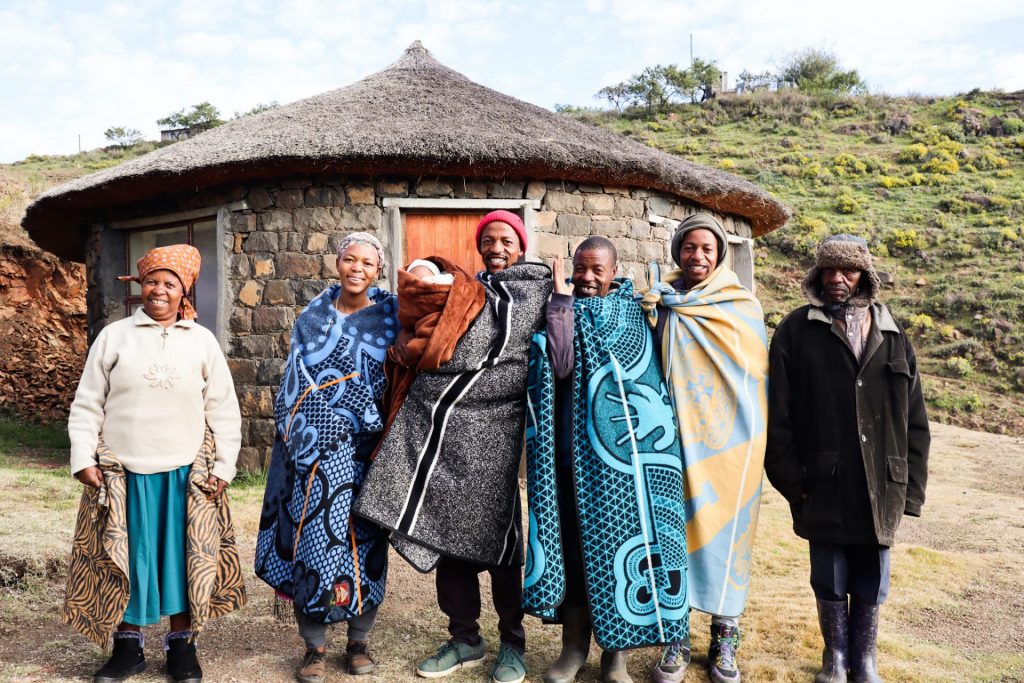
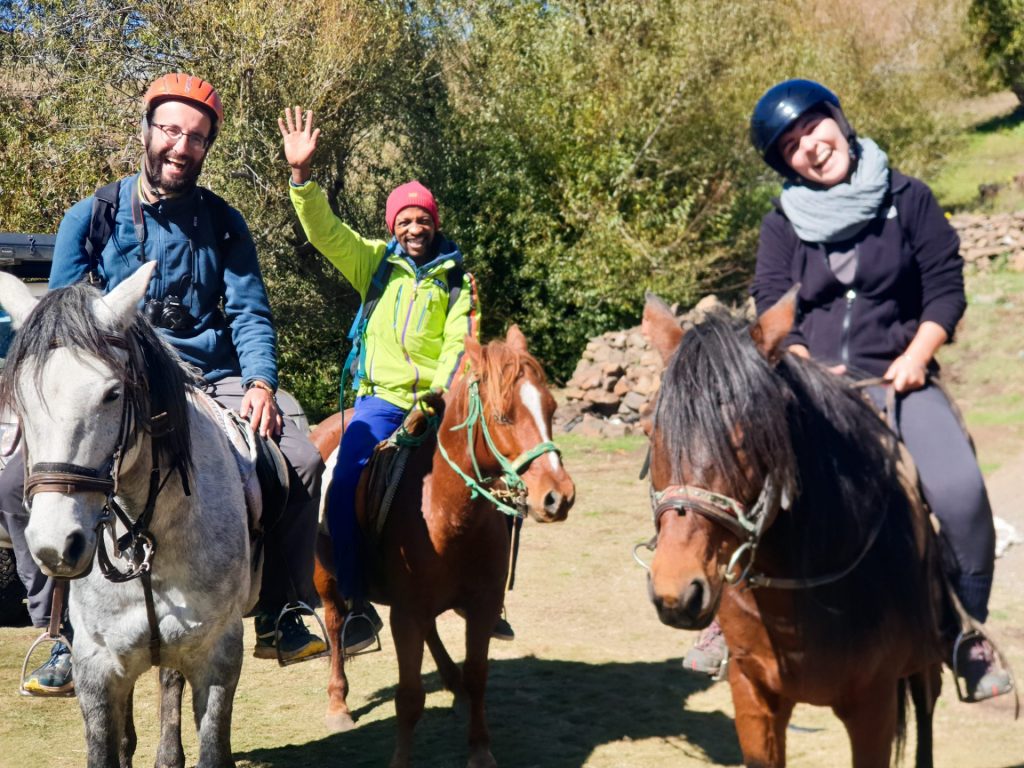




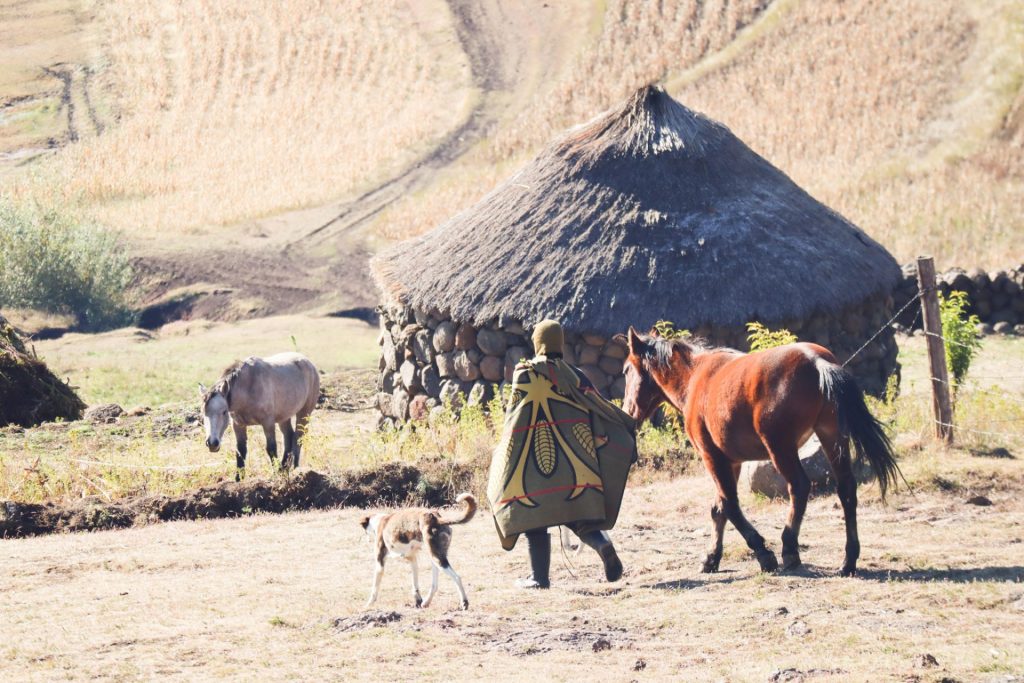

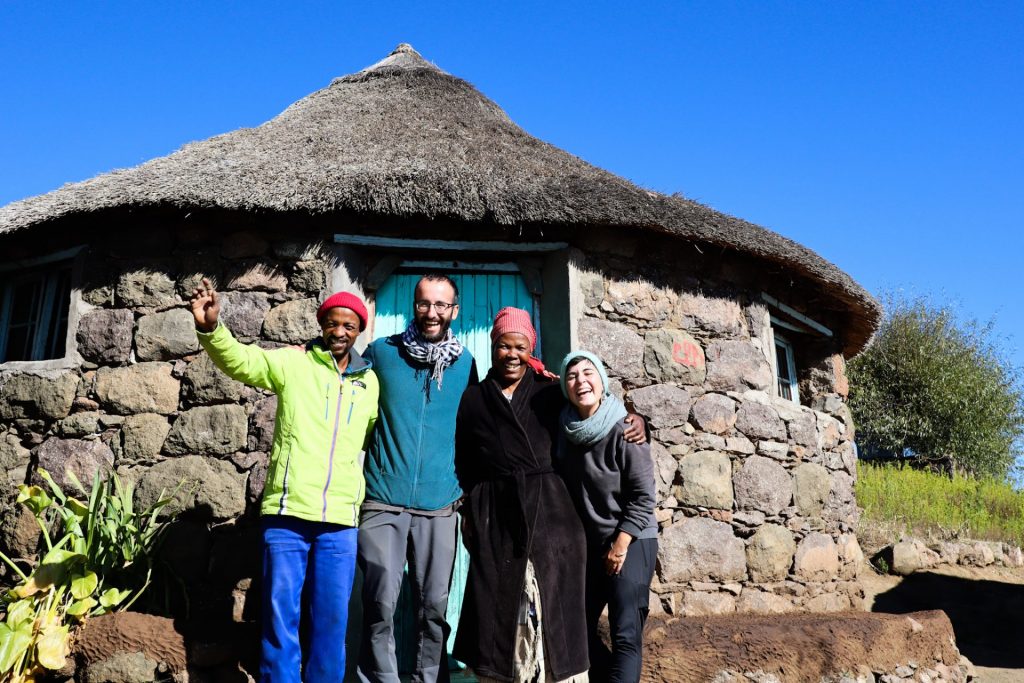
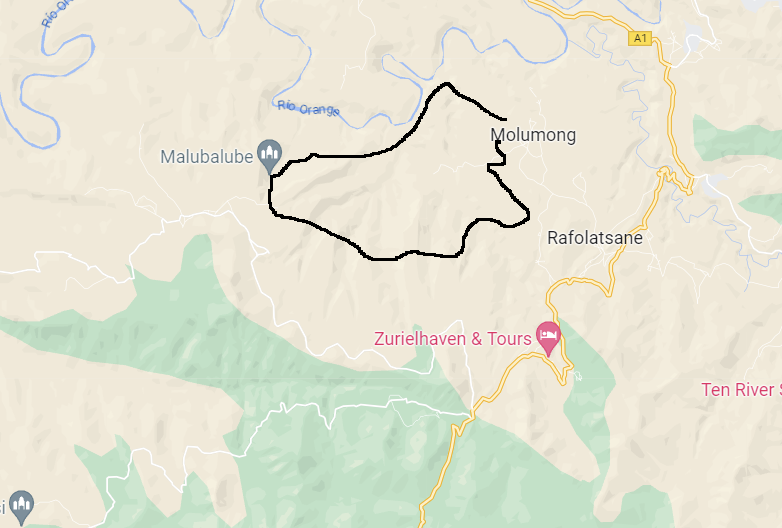
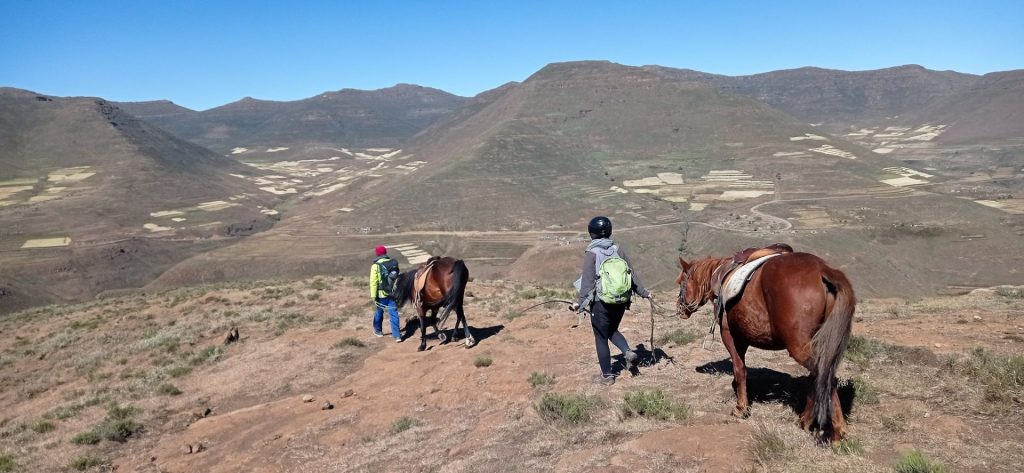


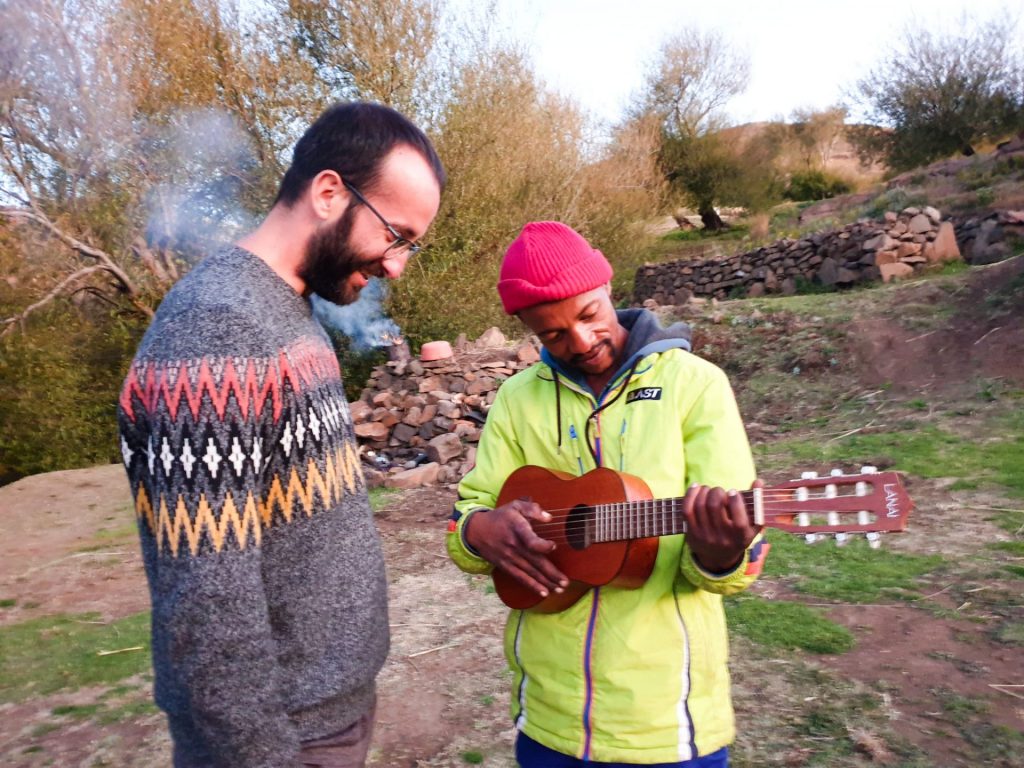

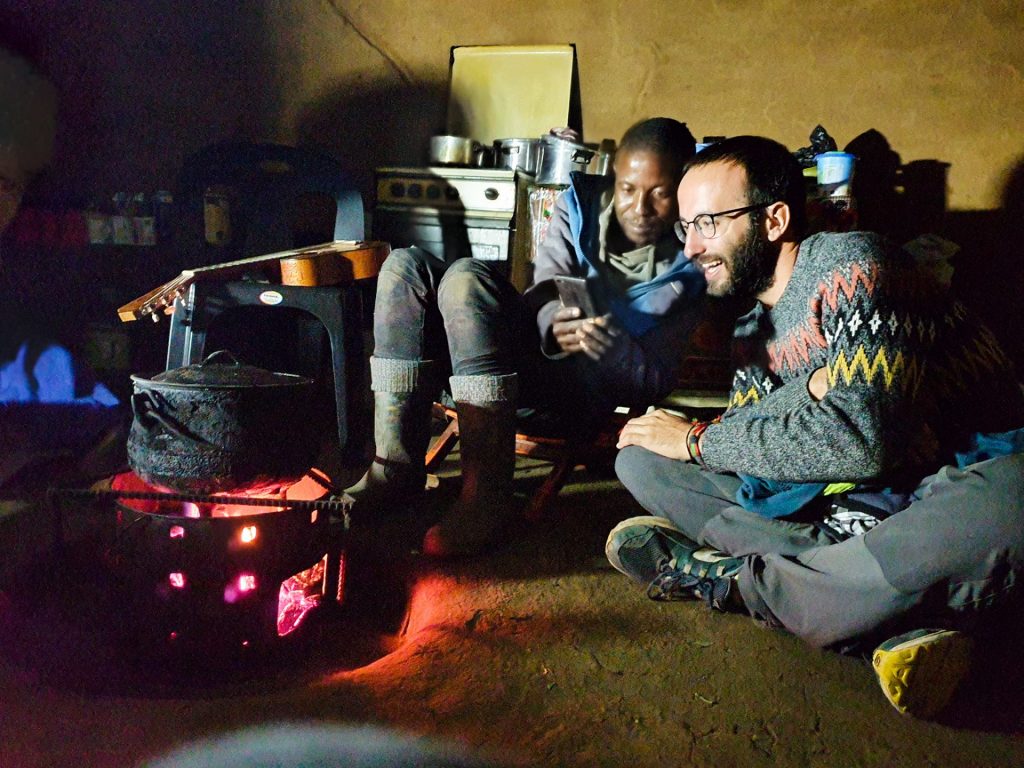
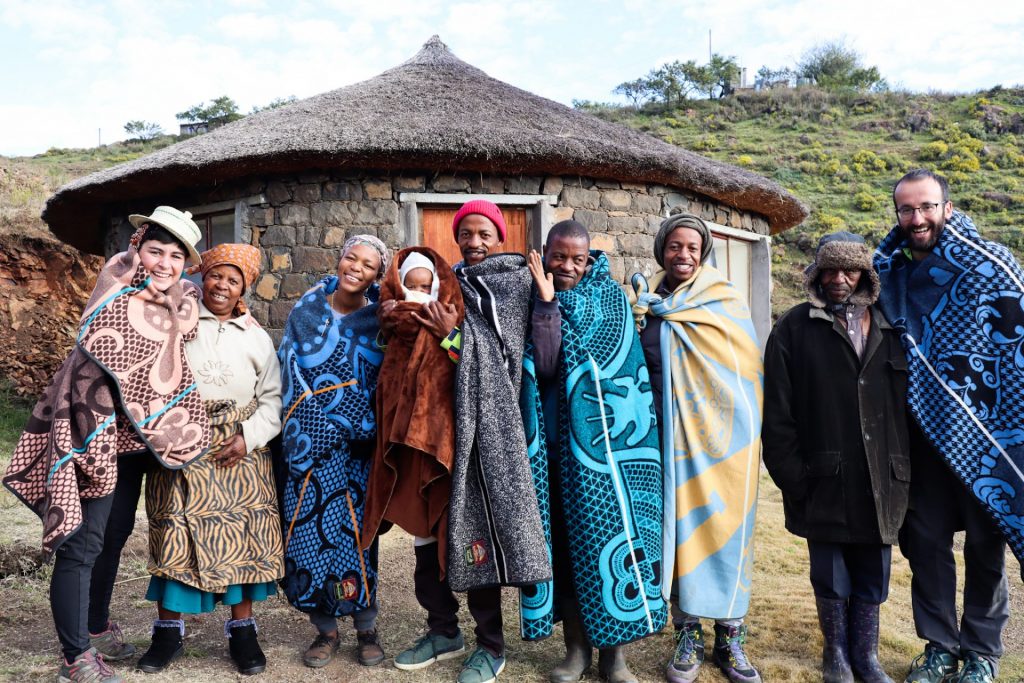
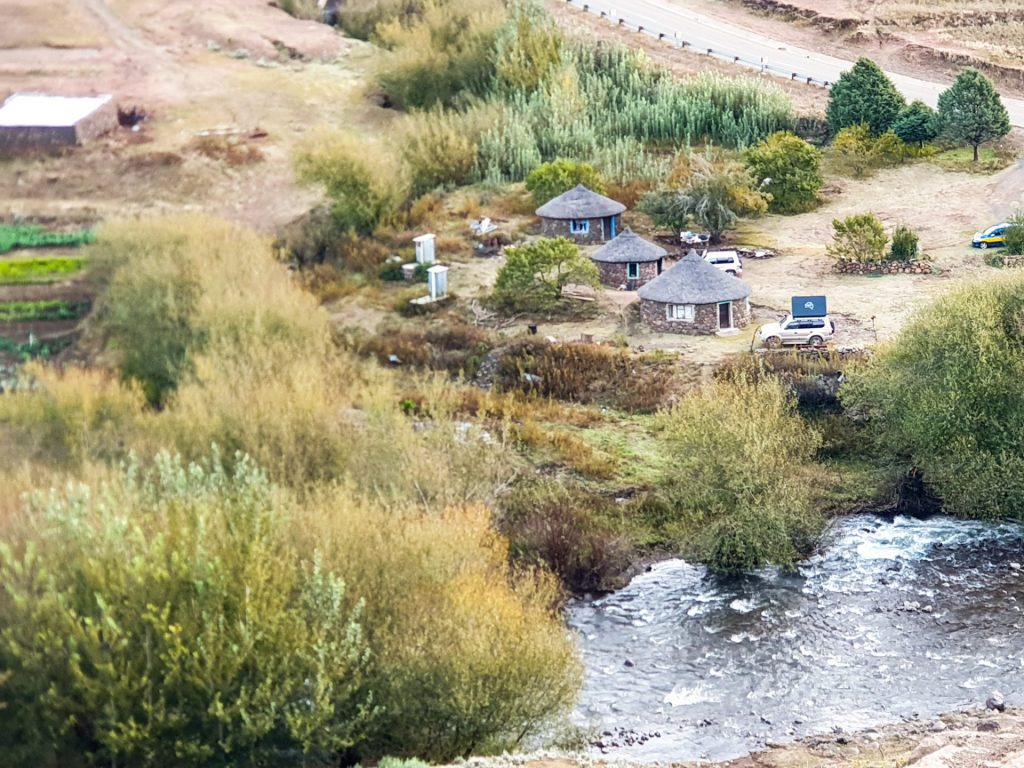
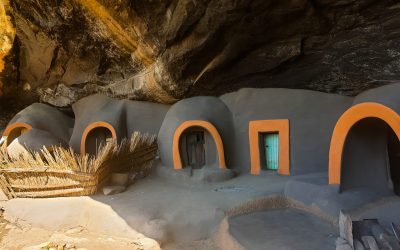
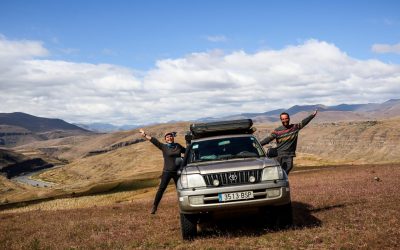
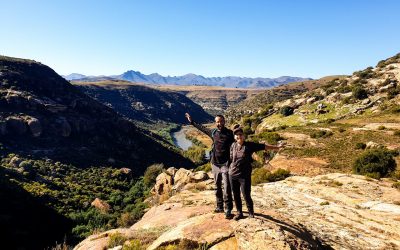
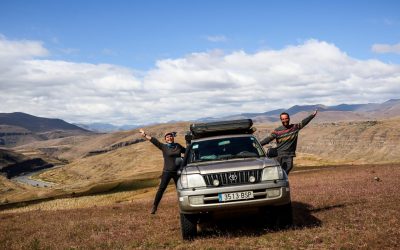


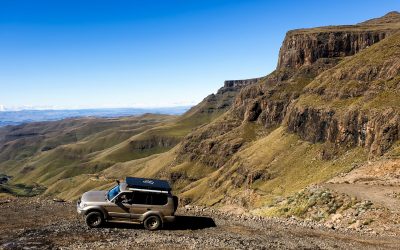

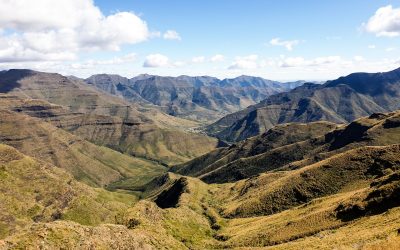
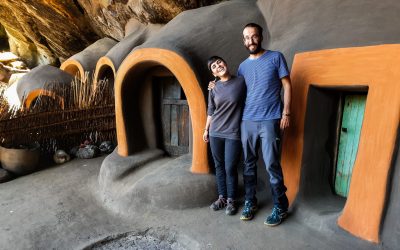
0 Comments